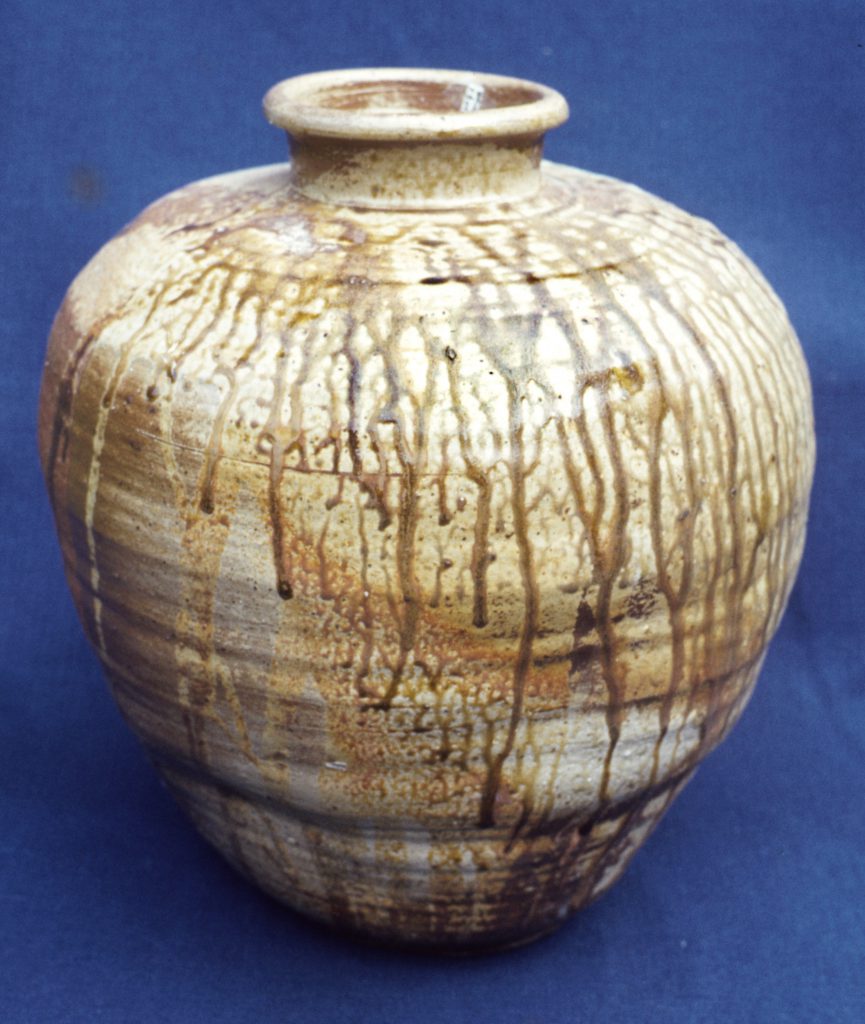
Naturally occurring wood ash has created an ash-glaze trickling down from the shoulder of this floor vase, covering its surface in drips and drops; wood-fired at 1300°C, Claude Varlan, Prissac, France 1982 (photo by Wolf Matthes).
As opposed to a classic ash-glaze, this type of wood- or coal-ash deposit occurs naturally and usually unplanned when a vessel is fired in a solid-fuel-burning kiln. The draught in a wood-burning kiln (vertical or horizontal potter’s kiln) causes ash from the fuel to settle on the vessel. At temperatures of between 1200°C and 1350°C (depending on the composition of the ash), the calcium oxide CaO, magnesium oxide MgO, potassium oxide K2O and phosphorus pentoxide P2O5 in the ash can react with the silica SiO2 and the aluminium oxide Al2O3 in the body of the clay to form a flux that is of low viscosity and high mobility, and that corresponds in its composition to common stoneware glaze. This means that it takes ash and a ceramic body to create a glaze, since most wood ash is low in SiO2 and Al2O3.
Translation Sandy Haemmerle
German: Ascheanflugglasur
French: Glaçure aux traces volatiles de cendres (grès aux cendres)
References:
Wolf Matthes, Keramische Glasuren 2, Koblenz 2012, 21–34.

